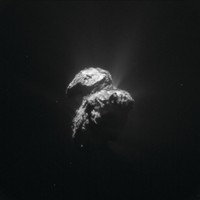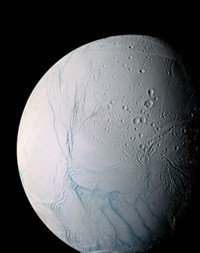Advertisement
Grab your lab coat. Let's get started
Welcome!
Welcome!
Create an account below to get 6 C&EN articles per month, receive newsletters and more - all free.
It seems this is your first time logging in online. Please enter the following information to continue.
As an ACS member you automatically get access to this site. All we need is few more details to create your reading experience.
Not you? Sign in with a different account.
Not you? Sign in with a different account.
ERROR 1
ERROR 1
ERROR 2
ERROR 2
ERROR 2
ERROR 2
ERROR 2
Password and Confirm password must match.
If you have an ACS member number, please enter it here so we can link this account to your membership. (optional)
ERROR 2
ACS values your privacy. By submitting your information, you are gaining access to C&EN and subscribing to our weekly newsletter. We use the information you provide to make your reading experience better, and we will never sell your data to third party members.
Environment
CO2's Little Helper
Climate Change: Satellite data show water vapor increases CO2 warming
by Elizabeth K. Wilson
December 16, 2009
A new set of satellite data indicates that further global warming is "essentially guaranteed" due to the amplifying effects of water vapor on warming from the greenhouse gas CO2, scientists announced yesterday.



Water vapor—which is itself a greenhouse gas—will more than double the climate warming effects from CO2, unless some as-yet-unknown factor cancels out that effect, climatologist Andrew Dessler of Texas A&M University said at the American Geophysical Union meeting in San Francisco.
Dessler and his colleagues unveiled seven years' worth of global maps of greenhouse gases, including CO2, methane, and water vapor, acquired by the Atmospheric Infrared Sounder (AIRS) aboard NASA's weather satellite Aqua. The AIRS instrument measured gas levels in the mid-troposphere, which lies 5–12 km above Earth's surface.
Scientists have believed for years that water vapor plays a key role in climate change, but this is the first time observations have corroborated this. The new data validate models that have predicted that when global temperatures rise from increased atmospheric CO2, the atmosphere becomes more humid, which further increases temperatures.
Clouds with increased moisture, and thus increased reflectivity, could potentially reduce the effect, Dessler said.
The AIRS project was to complement NASA's Orbiting Carbon Observatory, which crashed minutes after launch (C&EN, March 2, page 30). OCO would have orbited three minutes ahead of Aqua and mapped CO2 sources and sinks from Earth's surface to 20 km high.
The scientists said they hope NASA will eventually launch a new OCO. "We are keeping a spot warm for it in front of Aqua," AIRS team leader Moustafa Chahine said.
CAPTURING CO2
NASA's AIRS instrument mapped global tropospheric CO2 levels, shown in this animation. Red indicates higher levels.
WATER WARMING
An animation of AIRS measurements from June to November 2005 shows the global transport and distribution of water vapor.





Join the conversation
Contact the reporter
Submit a Letter to the Editor for publication
Engage with us on Twitter